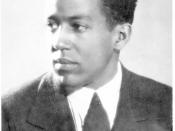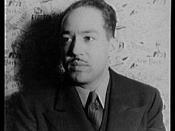When literary critics characterized the Harlem Renaissance as an isolated uprising of African-American writers and musicians, they are boldly robbing the Harlem Renaissance of its significance. The Harlem Renaissance, also known as the "New Negro Movement", was and, arguably, still is the greatest explosion of black art, literature, music, and theatre since the transportation of Africans to America. This artistic revolution explicitly confirmed that African-Americans possessed the ability to create stylized works with a cultural favor. It was no wonder why African-American literature and arts attracted significant attention from the nation at large. The Harlem Renaissance marked the first time that mainstream publishers and critics took African-American literature seriously. Although the movement was primarily typified as a literary movement, it was closely related to developments in African-American music, theater, art, and politics. As with any movement, the Harlem Renaissance acquires a distinguishable origin, attributes and consummation.
The year 1904 marked the beginning of the Harlem Renaissance.
Several middle-class African-American families moved from the decaying conditions of previous neighborhoods into the newly built suburb of Harlem. This initiated a northward movement of educated African-Americans and created a foothold into Harlem. In 1910, various African-American realtors and a church group purchased a large block along 135th and 5th Avenue. The relocation of African-Americans caused Caucasian inhabitants to flee from Harlem. Luckily, the massive upheaval of Caucasians benefited African-Americans by lowering the real estate prices. As more and more educated and socially conscious blacks settled in New York's neighborhood of Harlem, it developed into the political and cultural center of black America. With publishing of Alain Leroy Locke's The New Negro and Carl Van Vechten's Nigger Heaven, thousands of upper class New Yorkers, black and white, were drawn to Harlem's jazz halls. This perpetuated a national market for African American literature...


